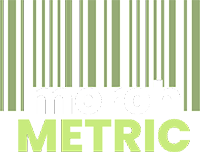The 2024 Digital Marketer’s Toolbox: 5 Must-Have Content Optimization Tools for 2024!
Last updated on September 30th, 2025
As a digital marketer, staying ahead of the game is crucial to success. With the ever-evolving landscape of online marketing, it’s important to have the right tools in your arsenal to optimize your content and drive results.
In this article, we will explore 5 must-have content optimization tools for 2024 that will help you stay ahead of the competition and maximize your marketing efforts.
Table of Contents
1. Content Intelligence Tools: Unlocking the Power of Data
2. Content Optimization Tools: Enhancing User Experience
3. PDP Optimization Tools: Maximizing Product Detail Pages
4. Social Media Analytics Tools: Understanding Audience Engagement
5. Voice Search Optimization Tools: Preparing for the Future
AI-Powered SEO Content Optimization Tools
Integrating Content Optimization into a Marketing Performance Strategy
Product Optimization Tools for E-commerce Growth
How to Build a Content Toolbox for Your Business
Frequently Asked Questions (FAQs)
1. Content Intelligence Tools: Unlocking the Power of Data
Content intelligence tools are becoming increasingly important in the digital marketing world. These tools provide valuable insights into your content performance, allowing you to make data-driven decisions and optimize your strategy accordingly.
One such tool is Content Insights, which uses artificial intelligence to analyze your content and provide actionable recommendations. It can help you identify gaps in your content strategy, optimize your headlines and meta tags, and even suggest relevant keywords to target.
Another powerful content intelligence tool is BuzzSumo. It allows you to analyze the performance of your content and identify trending topics in your industry. By understanding what content resonates with your audience, you can create more engaging and shareable content.
2. Content Optimization Tools: Enhancing User Experience
Optimizing your content for search engines and user experience is crucial in 2024. With the increasing importance of mobile optimization and voice search, it’s essential to have the right tools to ensure your content is easily discoverable and user-friendly.
Yoast SEO is a popular content optimization tool that helps you optimize your content for search engines. It provides real-time analysis and suggestions for improving your content’s SEO, including keyword optimization, meta tags, and readability.
Another tool that can enhance your content’s user experience is Hotjar. It allows you to track user behavior on your website, including heatmaps, click maps, and scroll maps. By understanding how users interact with your content, you can make informed decisions to improve engagement and conversions.
In addition to these, Merch Metric has emerged as a key tool for e-commerce and online retailers, offering specialized analytics and insights for enhancing product listings and merchandising efforts. As a product-content-specific tool, it delivers detailed insights by analyzing customer preferences and behaviors. This enables businesses to customize their content and product placements more effectively. Adopting such a targeted strategy can greatly boost the performance of product pages, resulting in increased engagement and sales conversions.
3. PDP Optimization Tools: Maximizing Product Detail Pages
For e-commerce businesses, optimizing product detail pages (PDPs) is crucial for driving conversions. In 2024, it’s important to have the right tools to optimize your PDPs and provide a seamless shopping experience for your customers.
Optimizely is a powerful tool that allows you to A/B test your PDPs and optimize them for maximum conversions. It provides real-time insights into user behavior and allows you to make data-driven decisions to improve your PDPs.
Another tool that can help you optimize your PDPs is Google Analytics Enhanced Ecommerce. It provides valuable insights into your customers’ shopping behavior, including product views, add to cart, and purchase data. By understanding how customers interact with your PDPs, you can make informed decisions to improve conversions.
4. Social Media Analytics Tools: Understanding Audience Engagement
Today, understanding and engaging your audience on social media is crucial. Tools like Hootsuite and Sprout Social are indispensable for this purpose. Hootsuite allows you to manage multiple social media platforms from a single dashboard, track brand mentions, and measure campaign performance. It also enables scheduling posts in advance, ensuring a consistent presence across channels.
Sprout Social further enhances these capabilities with its deep analytics features. It provides detailed reports on audience demographics, engagement patterns, and the best times to post. This tool also offers features for social listening, allowing marketers to monitor and respond to conversations about their brand in real-time. These insights are invaluable for tailoring content and strategies to various social media channels, ensuring maximum engagement and ROI.
5. Voice Search Optimization Tools: Preparing for the Future
As voice search becomes increasingly integrated into our daily lives, optimizing content for voice queries is becoming more important. Tools like SEMrush and Moz offer robust features to help in this area. SEMrush has a voice search optimization tool that helps identify keywords used in voice searches. It also provides insights into the type of questions people ask via voice search, enabling you to tailor your content accordingly.
Moz, on the other hand, offers features to improve local SEO, which is crucial for voice search optimization, as many voice searches are local in nature. It helps in optimizing your business listings and ensuring that your local data is accurate and consistent across the web. Both tools assist in understanding the nuances of voice search queries and in modifying your content to be more conversational and directly answer potential questions, thus aligning with the natural language used in voice searches.
AI-Powered SEO Content Optimization Tools
AI has transformed the landscape of SEO content optimization tools. Modern platforms can now generate keyword clusters, FAQs, and SERP-ready content in minutes, helping marketers scale without sacrificing quality. Tools like Surfer SEO and Clearscope make it easier to structure content around search intent, ensuring every piece aligns with ranking factors and user needs. By integrating AI-powered insights, businesses can maintain consistency, reduce manual research, and create content that resonates across search engines and audiences alike. For e-commerce brands, this also strengthens product content optimization, ensuring every listing is both search-friendly and conversion-focused.
Integrating Content Optimization into a Marketing Performance Strategy
A tool is only as powerful as the strategy behind it. For true marketing performance optimization tools to deliver results, businesses must align their chosen platforms with measurable KPIs. Whether the goal is improved engagement, higher search rankings, or stronger conversions, optimization platforms should tie directly into ROI metrics. Tracking the effectiveness of tools like Hotjar, Moz, or Merch Metric allows marketers to prove value and continually refine campaigns. This approach turns content optimisation tools from tactical helpers into long-term growth drivers.
Product Optimization Tools for E-commerce Growth
In the world of e-commerce, growth depends on more than just visibility, it requires precise product optimization tools. Platforms like Shopify’s native SEO plugins and Merch Metric offer specialized insights for optimizing product titles, descriptions, and metadata. These tools ensure that product pages rank higher while also delivering a more engaging user experience. When combined with content toolbox for e-commerce strategies, they provide online retailers with scalable ways to improve sales and streamline product content optimization.
How to Build a Content Toolbox for Your Business
Every business has unique goals, and building a content strategy optimization tool stack requires thoughtful selection. The first decision is whether to start with free tools like Google Analytics and Yoast SEO or invest in paid platforms such as Optimizely and Surfer SEO. From there, businesses can curate a content toolbox for e-commerce or broader marketing, mixing SEO, product, and analytics tools to fit their needs. The result is a custom optimization ecosystem that balances budget, usability, and long-term strategic goals, while maximizing the efficiency of both marketing performance optimization tools and product content optimization.
Frequently Asked Questions (FAQs)
1. What is the best content strategy optimization tool for e-commerce?
Tools like Merch Metric, Optimizely, and Google Analytics Enhanced Ecommerce work best for online retailers.
2. How do SEO content optimization tools improve performance?
They help with keyword targeting, readability, and metadata improvements, boosting visibility and conversions.
3. Do product optimization tools really improve sales?
Yes, optimized product detail pages can increase conversion rates by up to 35%.
4. Should small businesses invest in paid content optimisation tools?
Yes, especially when scaling. Paid tools often provide deeper insights and automation features.
Summary
In conclusion, the digital marketing landscape is constantly evolving, and it’s important to have the right tools to stay ahead of the competition. By incorporating these must-have content optimization tools like MerchMetric into your digital marketing toolbox for 2024, you can drive better results, improve user experience, and stay ahead of the competition.
Ready to Optimize Your Marketing Performance in 2024?
Take the guesswork out of product content and campaign results. With the right mix of content optimisation tools, SEO insights, and product optimization strategies, your brand can improve visibility, boost conversions, and scale smarter.
Suggested Reads:
- Which PIM Software in 2025 Will Help You Stop Drowning in Product Chaos
- How to Tackle Product Content Optimization When Managing 10,000+ SKUs Across Marketplaces
- New Amazon Sellers Are Launching Businesses With Zero Capital Using AI and Dropshipping

David Bodiford
David Bodiford has been the Chief Strategy Officer at Vserve Ecommerce. Specializing in business development and strategic planning, David leads initiatives to expand Vserve Ecommerce's market reach, focusing mainly on the B2B sector. His expertise in digital marketing and strategic partnerships is integral to enhancing the agency's ecommerce solutions.



